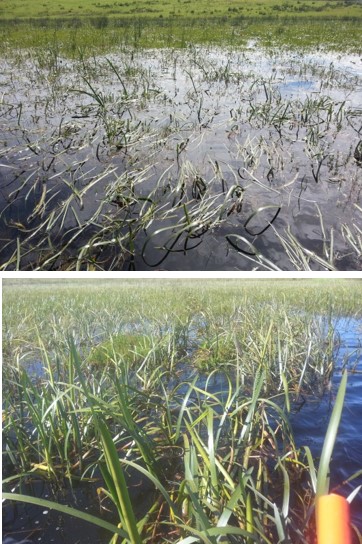Update #2 on Wetland Restoration Case Study 1 – Near Heywood
With Autumn now upon us we are busy working on some big and exciting restoration projects before the season breaks and this pretty significant dry spell comes (hopefully) to an end. Such has been the level of activity for the first quarter of the year that I haven’t got around to providing a summer update on our case study sites. First cab off the rank is our first case study site near Heywood. I visited the site with its owners toward the end of January and suffice to say we were all delighted with the outcomes. Winter and Spring in 2013 were very wet in this part of the world, providing a chance for the wetland to fill to it’s highest level in several decades – as a result of our restoration works. The effect of holding the water to a higher level was having a real influence on how long water is persisting in this wetland through summer and how deep the water level had been maintained.
Most of the site was still under 1 m of water, giving the thick stands of water ribbon (Triglochin procera) a really good, long soak. The various exotic grasses around the fringe which were there last year were now under water and slowly shifting to a plant community more akin with this expanding aquatic environment. A multitude of small sedges and aquatic herbs have now established in and around the wetlands edge, creeping further up the bank than has probably occurred for quite some time. So after just a few months of higher water levels, subtle changes are occurring. The benefits of increasing water availability for local wildlife and plants, especially in dry summers such as we have just had, are clearly on show at Kangaroo Swamp.



